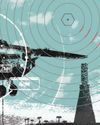
One of the most common questions asked of me as an airline pilot—and now as a former one—is, “Did you ever have any really close calls?” My coy response is usually, “The espresso maker on the Triple Seven quit just as we reached our North Atlantic oceanic entry point after departing from London.”
The inquiries emanate from a respectful and innocent perception that my “always” glamorous career was mostly routine but sometimes fraught with the perils of flying a potentially flawed monster jet airliner through the stratosphere. The question really involves threat-and-error management, a term that most of us had never really defined until the airlines and the FAA directed that the concept be included in our training.
For the most part, my colleagues and I thought we were doing the job all along, ensuring the safety of our passengers and crew by simply upholding recurrent training criteria and adhering to standard operating procedures. So, when we were introduced to a color-coded concentric circle that offered a methodology to visualize the intrusion of threats and errors—with green being normal, yellow being a potential problem and red being a serious threat—we skeptically accepted the new model as a tool to better assist in managing a safe flight.
This story is from the June - July 2020 edition of Flying.
Start your 7-day Magzter GOLD free trial to access thousands of curated premium stories, and 8,500+ magazines and newspapers.
Already a subscriber ? Sign In
This story is from the June - July 2020 edition of Flying.
Start your 7-day Magzter GOLD free trial to access thousands of curated premium stories, and 8,500+ magazines and newspapers.
Already a subscriber? Sign In

The Temple of Speed
Reno entices even this altitude-oriented pilot.

Flat Sixes
Fanatical artisans

Blue over Green, Tent in Between
I’m old , I’m cranky. Why do I keep air-camping?

Gulfstream Reveals G400, G800
The product lineup gains large-cabin and ultralong-range mounts.

Every Airplane Requires a Checkout
Embrace the challenge of mastering a new machine.

Fuhggedaboutit
Fifty-plus years of f lying forgetfulness

THE MAULE FAMILY APPROACHABLE AIRCRAFT
Choose your mount —the Maules do it all.

Sisters
“ Women certainly have the courage and tenacity required for long flights.” —Mildred Doran

INSIDE OUT OR OUTSIDE IN?
What kind of pilot should you be?

WE FLY: CESSNA CITATION CJ4 GEN2
THE FLAGSHIP CJ JUST GOT A WHOLE LOT BETTER.